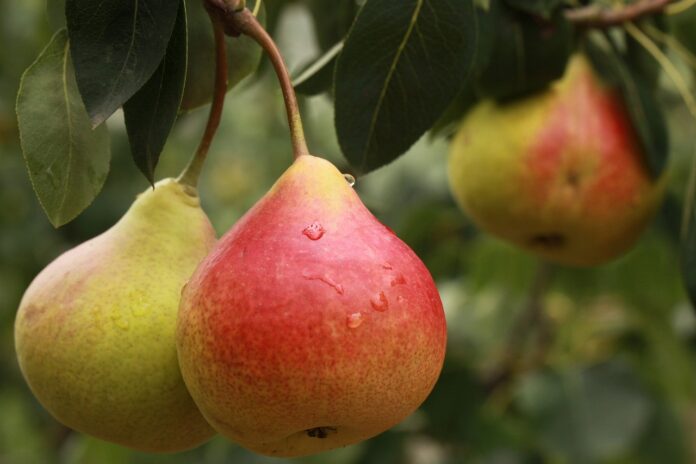Pears are a diverse fruit with over 5,000 varieties cultivated worldwide. They are especially prevalent in the Pacific Northwest of the United States, with Oregon and Washington producing the vast majority. Known for their delicate texture, pears are sensitive to bruising, requiring careful hand-picking and packing to maintain quality. Historically significant, pears have been cultivated since ancient times, particularly in China, and have inspired artists throughout history, appearing in various artworks.
Interesting Facts About Pears
- Ancient Cultivation: Pears are among the oldest cultivated fruits, with evidence of their cultivation dating back to around 5,000 B.C. in China. The Greeks and Romans also cherished pears, with Homer referring to them as a “gift of the gods” in The Odyssey
- Varieties: There are over 3,000 varieties of pears grown worldwide. The most popular varieties in the United States include Bartlett, Anjou, Bosc, and Comice
- Ripening Process: Unlike many fruits, pears do not ripen well on the tree. They are typically harvested while still firm and need to ripen at room temperature. Checking the neck of the pear for slight softness is the best way to determine ripeness
- Culinary Versatility: Pears can be used in a variety of culinary applications. They can be eaten raw, baked, poached, or used in jams, chutneys, and even savory dishes, similar to apples
- State Fruit: Oregon has designated the pear as its official state fruit due to its significance in the state’s agriculture, particularly in the fertile regions of the Pacific Northwest
- Oregon and Washington Production: Approximately 84% of all pears grown in the United States are cultivated in the Pacific Northwest, specifically in Oregon and Washington
- Wood Uses: Pear trees, which can grow 30 to 40 feet tall and live for up to 75 years, produce high-quality wood used for making musical instruments, custom furniture, and kitchen utensils
- Rose Family Relation: Pears (Pyrus communis) belong to the rose family, which also includes apples, cherries, and peaches. This connection is evident in their similar flowers and fruits
- Historical Significance: Pears have a long cultivation history, dating back over 3,000 years in Asia and Europe. They were later introduced to America by European settlers in the 1700s
- Nutritional Value: Pears are low in calories (around 100 per medium-sized pear) and high in dietary fiber, vitamin C, and potassium, making them a healthy snack option
- Storage Longevity: Certain pear varieties, like Bosc and Anjou, can last up to 10 months when stored properly
- Symbolism in China: In Chinese culture, pears symbolize longevity and are often given as gifts during the New Year celebrations to convey good wishes
- First U.S. Planting: The first pear tree in the United States was planted in 1620 by Pilgrim settlers in the area now known as Massachusetts
- Buddha-shaped Pears: In modern times, “Buddha”-shaped pears are sold in stores in Asia, symbolizing wellness and prosperity
- Latin Origin: The word “pear” is derived from the Latin term “pirum,” which originally referred to the fruit tree itself
